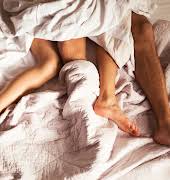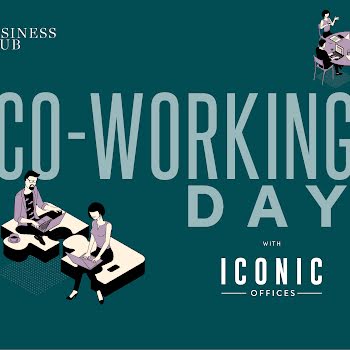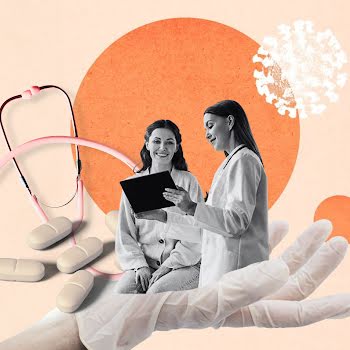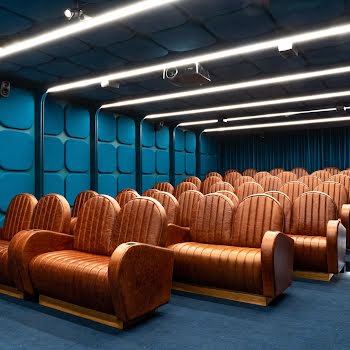
‘An Arctic challenge taught me that when you remove make-up and mirrors, you have the very best fun’
By Melanie Morris
28th Mar 2019
28th Mar 2019
I have a print hanging in my hall; It’s an AA Milne quote that says: Always remember, you are braver than you believe, stronger than you seem & smarter than you think.
I thought of those words often, as I counted down to my recent Arctic Adventure. I was one of 20 women – a group put together by DEBRA Ireland – to raise funds for those living with, and effected by EB (Epidermolysis Bullosa), the “butterfly skin” condition that, put frankly, inflicts a lifetime of pain and debilitation on those effected by making skin extremely fragile to touch; causing blisters and agonising wounds and high risks of aggressive skin cancer.

Living with EB revolves around painful and lengthy bandaging sessions every second day of a patient’s life, taking four to six hours to complete. There are approximately 300 individuals (mostly children) living with EB in Ireland. So, to raise funds for DEBRA, I had accepted a challenge to live back to nature, 150km north of The Arctic Circle for a week; in a remote log-cutter’s cabin with no electricity, no heating or running water; no bathrooms, and the most basic of accommodation – ten to a bedroom, plus a kitchen, drying/boot room and central area which featured stark wooden benches as furniture.
In order to raise funds, we were going to learn to survive in the wild; to ski and snow shoe in the harshest of conditions; to carry all we’d need in sleds which we’d pull up and down mountains
In another cabin was a sauna, where we’d wash daily (again, no electricity, so “powered” by a wood-burning stove), in another outdoor spot, 4 dark, compostable toilets where you’d scale steps to a Styrofoam loo (actually, quite genius as at least it wasn’t perishing on your bum), and nature would freeze the consequences. Every day we’d have different chores – to collect water from the adjacent river, through a hole broken into the ice so we could access the freshest, cleanest, water in the world (officially); to build, light and maintain the fires in our home and sauna; to help cook, prepare and clean up in the kitchen; or to keep our shelter and outhouses clean, keep steps from icing up and ensure maximum possible comfort for all.

Survive in the wild
But this was just survival, not our “challenge” per se. Nope, in order to raise funds, we were going to learn to survive in the wild; to ski and snow shoe in the harshest of conditions; to carry all we’d need in sleds which we’d pull up and down mountains, and along a forest track. Then to pitch tents, cook food from melted snow, and sleep overnight in well-below sub-zero temperatures (the first night we arrived, the thermometer hit below -22 degrees). In addition to survival, we each wanted to raise at least €5,500 for DEBRA. Representing Team IMAGE was myself, and events queen, Sarah Murphy.
To cut a long story short, we did it. Not just that, we did it in a most fulfilling way imaginable – with joy, sweat, laughter, some great guidance from our expedition leaders at Adventure.ie, and true cooperation and teamwork with our fellow challengers. And here’s what I learnt along the way:

1. Finland is bloody cold; but a different sort of cold – biting, dry and bright. There’s no moisture in the air, but instead you see little crystals floating about like nature’s glitter; it’s beautiful, but tough. The way to dress is to layer in light weights of Merino wool and fleece. No cotton, not even knickers, because cotton absorbs water (sweat, snow, whatever) and can freeze, leading to frostbite. Yes, even on your bum. We all wore about four or five layers per day, adding and removing in accordance with the amount of heat-generating activity we were up to.
2. The snow in Finland is like the cold… intense, and very dry. Unlike the big soggy flakes we see at home, their snow is just 10% water, the rest is air, so it’s impossible to make a snowball, and very hard to pack down. That means unless walking on a treated track, you’re likely to fall waist-deep into air pockets at any moment. It’s unpredictable… a group of people could walk the exact same route ahead of you, but like a game of Jenga, you’ll just disappear randomly.

3. It only takes two inches of ice to hold an adult’s weight; four to hold a car; and on the frozen lakes and rivers of Lapland where we got our water and over which we skied, the ice is more than six inches deep. Apparently, you could land a Jumbo Jet on it.
Finnish women used to give birth in the sauna. This did not happen on our trip.
4. Saunas are THE CRAIC! They are also great for getting warmth back in those mortal bones and sore muscles. The chats that go on as you sweat away make them like a Finnish confessional – what is said in the sauna stays in the sauna! Washing also takes place here (top beauty tip – the steam enhances the efficacy of hair masks considerably), and back in the day, Finnish women used to give birth in the sauna. This did not happen on our trip.

5. Building fires is fine, lighting them is grand, but keeping her lit is a whole different ball game. Fortunately, I had expert fire whisperer Sarah Murphy on my chores team. Not only could she poke and fuel like a pro, she could also make sparks from flint and thus didn’t need matches. We also learnt that the flaky, dry bark from Birch trees made excellent kindling.
By day four we had all replaced the word “roof” with “crotch” due to sore hipflexors
6. To quote Henry Ford: Whether you think you can, or think you can’t, you’re right. On day one, we were all rookies on the snow but we all quickly learnt to snowshoe and cross-country ski; by day two we were doing a 10km trek. In fairness, that was down to the great tutorage of our leaders from adventure.ie. What they couldn’t help us with, however, was the muscle-ache that went with our exuberant embracing of this new mode of transport. By day four we had all replaced the word “roof” with “crotch” due to sore hipflexors, and were loudly chanting the appropriately amended lyrics of “The Roof Is On Fire” repeatedly.

7. When you remove make-up, fancy clothes, hair driers, phones and mirrors from a group of women, you have the very best fun. Now, it could be argued that the pre-selection that naturally came with this challenge would lead to an organically-gathered great bunch of gals, but the experience was definitely enhanced by the lack of adornment, vanity and harsh lighting. We spent far more time on the important things like sharing chocolate, chanting about our crotches and helping a sister out. The sense of community amongst us was strong from the start and while we’re all very different, we’re now a tight bunch of friends for life. I have goosebumps even writing this.
8. EVERYONE snores at night. If you think you don’t snore, it’s because you’re asleep (and, quite likely, snoring).
9. Food is very important in the cold. We all thought we were going on a chilly version of “I’m A Celebrity” and would come home two stone lighter, but er, no. It was up to Ronan Mullan, our Expedition Leader to break the bad (but also good!) news… If you want to stay warm, you need to fuel the body. Of course, it makes sense. We were fed so well in our lodge and said yes to seconds at mealtimes, and ALL the jellies when out on our skies. It certainly made for a lot more smiling faces. And again… no mirrors!

10. Booze in cold climates is a very bad idea. This is something that was new to me, who’d grown up thinking a shot of Brandy or similar (dispensed, ideally, from a St Bernard for the perfect Instagram moment) was a very enjoyable way to tackle harsh conditions but this is total baloney, according to Ronan. He explained that yes, on the very short term a slug of alcohol delivered that lovely warm sensation; however, this brings blood away from vital organs and to the skin surface, where it gets cold and puts the body under greater stress. There was an alcohol ban on all our expeditions, and crucially on our overnight camp out, where we melted snow (which took ages, due to the miserable 10% water content) and put it into our posh flasks (thanks Heyfield Manor) to serve as hot drink and hot water bottle in one. That night, we slept out, three to a tent, in sleeping bags that functioned in up to minus 27 degree cold and when zipped up, made us look like human burritos. The combination of sleeping bag, thermal layers (remember, no cotton), balaclavas, gloves and endless heat patches saw us all actually get a surprising amount of sleep.

11. Our pain is temporary, those with EB have to struggle, manage, “put up” and endure discomfort (at best), every day of their lives. At one stage on our overnight expedition where we were paired up to pull sleds (or pulks) filled with our tents, stoves and belongings, Sarah’s snowshoes broke due to the extent of very dry, powdery snow that had recently fallen. This meant I had to drag the pulk solo for a bit (others partners could help by pulling from the cross-bar, and thus lightening the overall load). As I set off, I remembered that the six-hour trek to camp was about the same time a bandage-changing session would take for someone with EB. I remembered the video we’d been shown of the very brave Emma getting her dressings and wounds attended to. Hell, I could manage a bit of a struggle, so off I went, employing the HIIT (high intensity interval training) timings of my F45 gym classes – 45 seconds on, 15 seconds rest. I got up the first slope, and then the second, by which time Sarah was back at my side and we were back on (relatively) easy street. But the exercise served as a very mindful reminder.
I had no bother sleeping with nine others; even the loo situation was absolutely grand.
12. Humans adapt very quickly, and very easily. After a week of our back-to-nature lifestyle, I’d gotten used to wandering around with a neck torch for company; I had no bother sleeping with nine others; even the loo situation was absolutely grand. In fact, the morning after I arrived home, I felt a bit lonely without my #girlsquad around me. And the most remarkable thing, I got used to the cold and how to manage it in the matter of a couple of days. Now the challenge is to get back to ‘real’ life and the hundreds of emails that are winking in my inbox.

So, in short, yes it really was the trip of a lifetime, and I’d recommend anyone who might be interested to give it a go in 2020. You can find details at debraireland.org
And as a final fundraising rallying call, if you’d like to donate to my, or Sarah’s gofundme page, our links are below. We’ve both covered all costs associated with the trip ourselves, so any donations will go straight to DEBRA to help those amazing families cope with EB.



















